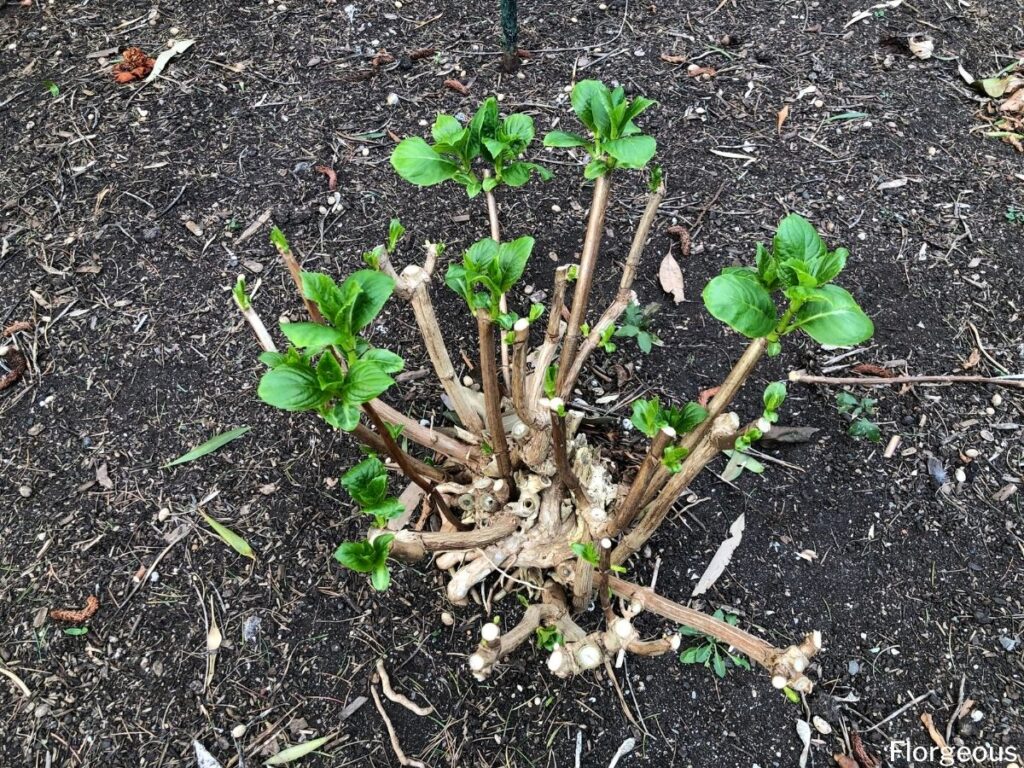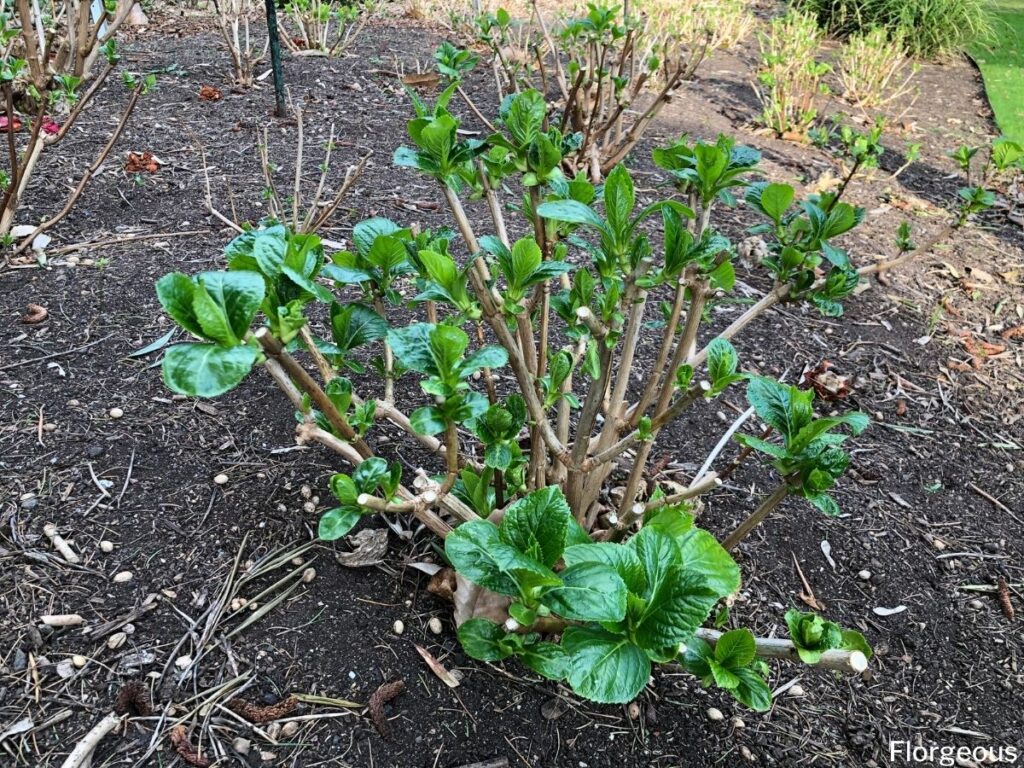Planting and transplanting hydrangeas may sound like a daunting gardening task, but the reality is that this chore is actually quite easy to handle.
Whether you’re planting a fresh new arrival that you just purchased from the nursery or you are moving a hydrangea that you already have growing on your property, knowing the proper steps can save you a bit of stress – and help you keep your plant healthy!
Here’s what you need to know when growing hydrangea bushes.
When is The Best Time to Transplant Hydrangeas?
Technically, you can transplant this kind of shrub at any time, but there are some times of the year that are more appropriate than others.
Similar to hydrangea propagation, the best time to transplant is in the spring, ideally after the early spring but before it gets too hot. Although a hydrangea can survive transplanting in extremely warm conditions, you’ll be subjecting it to unnecessary stress if you decide to do so.
Instead, transplant when temperatures are cool, but not freezing. The growing season for these shrubs is between March and September. If you’re moving a larger specimen, doing so in the fall is acceptable, too.
If you are transplanting a shrub that you just purchased from the nursery (not relocating one that is already on your property), you may need to harden it off first. This will help it get used to outdoor conditions, including the sunlight, wind, and fluctuating temperatures.
To do this, start by setting your shrub outside in its container for a maximum of two hours on the first day. On the second day, increase the time by another hour, on the third day, by two hours, and so on. After about a week of this, your shrub s=hould be able to stay the whole day outdoors without any ill effects.

Where is the Best Place to Plant a Hydrangea?
Once you’ve decided when you’re going to plant your hydrangea, the next thing you need to figure out is where. Here are some factors to keep in mind.
Soil
The location where you transplant your hydrangea should contain soil that is well-draining and organically rich. You can amend the soil prior to transplanting with peat moss, compost, or even some bark. Just steer clear of high-nitrogen fertilizers like animal manure prior to planting, as these may encourage a flush of foliar growth at the expense of beautiful blooms.
Do a soil test to determine the pH level and prepare the soil by adding compost. A neutral pH is preferred, but you can influence the color of your hydrangea’s flowers by making your soil more acidic or alkaline (so take that into consideration when choosing the planting site).
Acidic soils encourage blue and purple blooms, while alkaline or neutral soils encourage pink and red blooms.
Water
These shrubs like to be kept consistently moist – but not soggy. When selecting a planting site, ensure that the soil has efficient water drainage.
Too much water can cause brown leaf edges and leaf drop, especially if the roots sit in water for a long period of time. To maintain optimal moisture levels, water regularly and monitor the soil to prevent over-saturation.
Sunlight
For the most part, hydrangeas thrive in locations that receive bright morning sun and afternoon partial shade. Neither full sun nor full shade conditions are ideal for this shrub.
Other Considerations
Last but not least, think about the plants that you will be growing around your hydrangea. Will your hydrangea overshadow them, providing too much (or too little) shade? Will it soak up too many nutrients, too much water, or other valuable resources?
Be thoughtful about where you plant your hydrangea – it’s far easier to think about these things now versus after you’ve already planted and decided that you want to move your shrub.
How to Plant or Transplant a Hydrangea
As mentioned earlier, the best time to plant a new hydrangea plant is in the spring – but if you’re relocating one that you have already established on your property, you may want to plant in the fall instead. Wait until after all the bushes have gone dormant but not so long that the ground freezes in the meantime.
Start by digging a hole in your new location. This new hole should be about twice as wide and deep as the root ball of the existing plant. If you’re moving an established plant, you may need to prune back some of its bushy old growth before you move it. Additionally, consider the drip line of the plant when choosing the new location.
Free up the root ball of the plant, using your fingers to gently tease apart the roots. Place the root ball in the hole, then fill in some soil around it. Thoroughly soak the root ball with water, watering deeply until the soil settles.
Mulch at a depth of two to three inches deep around your hydrangea, using an organic mulch like shredded bark, straw, or compost. This will protect the establish roots of the shrub as the plant is getting adjusted to its new location. It can also help guard against hydrangea transplant shock.
Can You Relocate a Hydrangea?
Obviously, it’s best to plant your hydrangea in the ideal location the first time around! However, if you decide that your shrub needs to be moved for whatever reason (perhaps you need to do some landscaping work or you just don’t like the spot where it is currently planted) the good news is that you can easily relocate your plant.
You just need to do a little grunt work!
Don’t be afraid to get your hands dirty when it comes to planting and transplanting hydrangeas. With a bit of effort, you can grow gorgeous shrubs that will provide you with beautiful blooms for years to come.
FAQs
What is the best time to transplant hydrangeas?
The best time to transplant hydrangeas is during the dormant season, typically in late fall or early spring when the plant is not actively growing. This allows the hydrangea to establish its roots before the onset of new growth.
Can hydrangeas be split and transplanted?
Yes, hydrangeas can be divided and transplanted, but it’s essential to do so carefully to avoid damaging the plant.
Can you cut and transplant hydrangeas?
Yes, you can cut and transplant hydrangeas, but it’s important to do so correctly to minimize stress on the plant.
Why is my hydrangea wilting after transplant?
ydrangeas may wilt after transplanting due to transplant shock, which occurs when the plant’s roots are disturbed during the transplant process. To minimize transplant shock, water the hydrangea thoroughly before and after transplanting, and provide shade or protection from harsh sunlight until the plant recovers. Additionally, avoid transplanting during hot, dry periods, as this can exacerbate wilting and stress on the plant.
See more:







